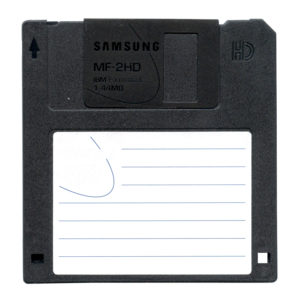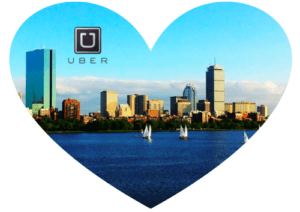2032. A man and a woman talk
– I’d love to see you again… what’s your Facebook?
– It’s Eva Thompson on MeetNik.
– Don’t have MeetNik. Any chance you have Planet1?
– Sure, I’ll add you there.
———————————————————————————————————————————————————————-
A proprietary eponym is the pinnacle of brand awareness.
It’s every time you say “I’d like some Coke” – not “I’d like some cola”, “I drive a Jeep” – not “I drive an ATV”, and “Pass the Heinz” – not “Pass the ketchup”.
https://giphy.com/gifs/pass-the-heinz-fiwgO8KJF04EUXQhYA
It’s when a brand or a trademark has become so established, that its name is used to refer to the general class it belongs to.
Like in our story at the beginning: Don’t be surprised if in the future the word ‘Facebook’ not only will describe said social media platform but the category of social media platforms.
Let’s be honest; there are very few brands that will ever succeed that. But that’s not the point. The point is that you should try building awareness for your brand. This way, you build trust and relevance.
Oh, and you let people know you exist along the way.
Today, we learn from the best.
How did brands rise from obscurity with $0 advertising spend and became the industry leaders we all know today?
Here are the 6 case studies of Hotmail, Dropbox, Evernote, Uber, and Kissmetrics.
How did Hotmail build brand awareness?
I’ll start with a classic.
We’re discussing pre-Microsoft Hotmail here.
1996: Diablo, Quake, Tomb Raider… and 2MB free storage on your email. No social media. 2MB free storage means more storage than a floppy disc – not too bad for ’96.

No-social media means a cold start. I would call it frozen in our case.
Against all odds, here’s what the timeline of the first year looked like:
July 1996: 0 subscribers
December 1997: 12 million subscribers
What happened in such a short period?
The answer lies in a sentence at the end of each mail:

The impact was massive.
Hotmail was acquiring 3,000 new users each day, and within 6 months it reached the 1 million mark. Five weeks later, 2 million users. In the end, 12 million subscribers.
What makes that number more impressive is the internet reality of that era: 70 million total users.
The “PS: I Love You” story is considered to be the first growth hack.
Since then, growth hacking has made giant leaps. From the spread of an email platform, we’ve come to how to Find Anyone’s Email Address.
? Hotmail’s lesson on how to build brand awareness: Take advantage of every inch of your digital properties.
How did Dropbox build brand awareness?
Our story begins with the now-gigantic file hosting service in April 2008.
Registered Dropbox Users: 100,000
Fast forward to January 2010.
Registered Dropbox Users: 4,000,000

Wait, what happened?
Dropbox’s referral program happened!
Growth within 15 months: 3,900%
Month-over-month growth: 15-20%
35% of daily sign-ups from the referral program
20% from shared folders / other viral features
OK, but what’s the story behind the numbers?
The mechanism of Dropbox’s referral program was rather simple: For every referred friend, Dropbox was adding 500MB of space (for both!), up to a limit of 16GB. (To unlock more space, an account upgrade was needed).

Dropbox managed to communicate the benefits of its referral program in a clear and eye-catching way:

To break it down a bit, these are the 4 main steps Dropbox made to create a Viral Loop:
- Offered an extended version of the same product.
- Made it part of the onboarding process.
- Gave users a clear view of the benefits.
- It made clear the tracking of said benefits.
? Dropbox’s lesson on how to build brand awareness: Referral programs and Word of Mouth work.
How did Airbnb build brand awareness?
Airbnb, the global company from San Francisco, revolutionized the lodging industry and brought significant changes to other industries along the way; namely the rental industry and tourism.
In one of the most notorious growth hacking moments in the history of growth hacking, Airbnb got initial traction from (leveraging) Craigslist.
In the first stages of Airbnb’s development, craiglist.com was the #1 digital destination for subletting and leasing. It would have made sense for Airbnb to use Craigslist as its platform – however, it preferred to do something else.
At that time, around 2010, Craiglist didn’t have an application programming interface (API) that would allow for information to be input into their system or pulled off. So this is what Airbnb did: Once a user published a room on Airbnb, a quick link would appear, urging them to also post the room on Craigslist’s website. The repost would include a link to AirBnB’s website.
Thus, when someone would find the listing on Craigslist, they would click the link and be brought to Airbnb. This resulted in free traffic and signups for the hospitality service startup.

For more about the technicalities behind the process, you can read the “Reverse-engineering “Post to Craigslist” section by Andrew Chen, here.
In addition, Airbnb developed a tool that allowed them to reach out to potential property owners. Airbnb created a bot that would send routine posters on Craigslist invites to list their property on Airbnb. This allowed AirBnB to obtain additional properties that they could offer their potential customers.
Eventually, Craigslist noticed all of this activity and stopped it. However, Airbnb’s growth had already taken off.
What Airbnb did is arguably considered unethical, being against primary business ethics. Nonetheless, the technical knowledge that Airbnb had and the phenomenal creativity it applied, have made it into one of the most significant case studies to this day.
? Airbnb’s lesson on how to build brand awareness: Build your audience from someone else’s audience.
How did Evernote build brand awareness?
The note-taking, task-management app took advantage of a process that goes as back as the ’50s. In particular, it’s something IBM first started, and it still exists since then: user testing aka Beta testing. During the life cycle of software release, developers often invite testers to report any bugs they find, while they suggest additional features they think should be available in the final version. That’s beta testing.
The beta began with the company giving away 100 invites on Techcrunch. From that early spark, they welcomed a couple of thousand people within the first few days. The closed beta was planned to last 4 months, and their goal was to get 10,000 people, more or less. However, the spark had turned into fire.

In July 2008, the iPhone App Store launched, and Evernote was practically forced to launch as well. By the end of four months, over 125,000 people had made an account to join the closed beta club.
Luckily, the servers didn’t crash, and the Evernote team worked out the scaling issues as they grew.
Up to this day, Evernote is steadily increasing in size with over 3 million members presently.
Closed beta as a growth technique is exceptionally common in the gaming industry. The developers and publishers do it because it works.
Some of them, take it even further. Past the beta releases and crowdfunding, there’s another profitable category: Early access, or paid-alpha. If you take a look at early access categories, like on the biggest digital distribution platform, Steam, there’s a big number of customers who are eager to pay for an unfinished product.

Paying for the sake of exclusiveness is a whole category by itself.
? Evernote’s lesson on how to build brand awareness: Exclusivity creates buzz.
How did Uber build brand awareness?
Uber was found in San Francisco, the reason being that the city was, and still is, home to a strong tech community and funding.
The brand provided free rides to well-connected attendees of tech and venture capital events in San Francisco and other major cities. These influential people shared happily their experience with the tech press and their social media audiences, bringing that way Uber’s name in the frontline.
Uber’s freebies didn’t stop there.
In Boston, after the 2013 Marathon bombing, Uber lent a helping hand by providing free rides to hospitals. The press loved it and let people know it did.

In October of the same year, same place, Boston Public School buses went out of commission; Uber swooped in to save the day, offering free rides for the students and their families – no questions asked.
It was a smart marketing move and a good gesture at the same time which resulted in news coverage from major Boston publications, as well as the New York Times. Uber was introduced to the parents as a safe way to transport their children.
Uber managed to bring a feeling of safety to the customers.
? Uber’s lesson on how to build brand awareness: Be nice and give something for free.
How did Kissmetrics build brand awareness?
Here’s a nice equation:
47 infographics = 2,512,596 visitors + 41,142 backlinks + 3,741 unique referring domains

From 0 to 350,000 readers a month, the popular web analytics website credits infographics was the driving force that gave the brand the momentum it needed to take off.
On the one hand, take the natural curiosity of people to learn new things. On the other hand, take the pleasure they feel at looking at bright colors and designs. Now clap your hands, say ‘yeah’, because you now know the true power of Infographics!
Infographics help potential customers learn about you through your content. If they like it enough, they will share it and the cycle will repeat.
Kissmetrics came to this realization early enough and leveraged the force of infographics for their own virality purposes and brand awareness. This is also how they generated links from sites like Forbes and Huffington Post.
So, do you want to dominate part of the web with your logo? Create infographics people will genuinely be interested in. Just don’t forget to put your logo on.

The reality is that we’re moving toward a more visual marketing world – and fast.
It would be best if you considered making an infographic as part of your content marketing strategy.
? Kissmetric’s lesson on how to build brand awareness: Leverage Infographics.
Epilogue
Building brand awareness is vital, especially brand awareness for startups.
Every brand on our list that grew and succeeded has a different lesson to offer.
However, what they all have in common is this: They created value for their customers. And their customers, consciously or not, rewarded them.
Therefore, in order to get, you have to give. And sometimes, giving costs nothing.

I write for GrowthRocks, one of the top growth hacking agencies. For some mysterious reason, I write on the internet yet I’m not a vegan, I don’t do yoga and I don’t drink smoothies.



